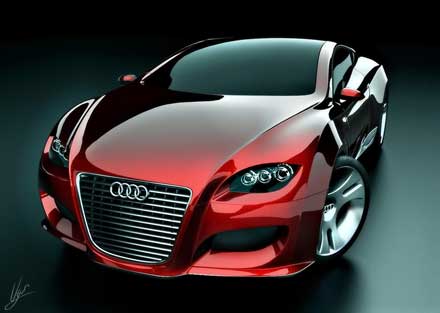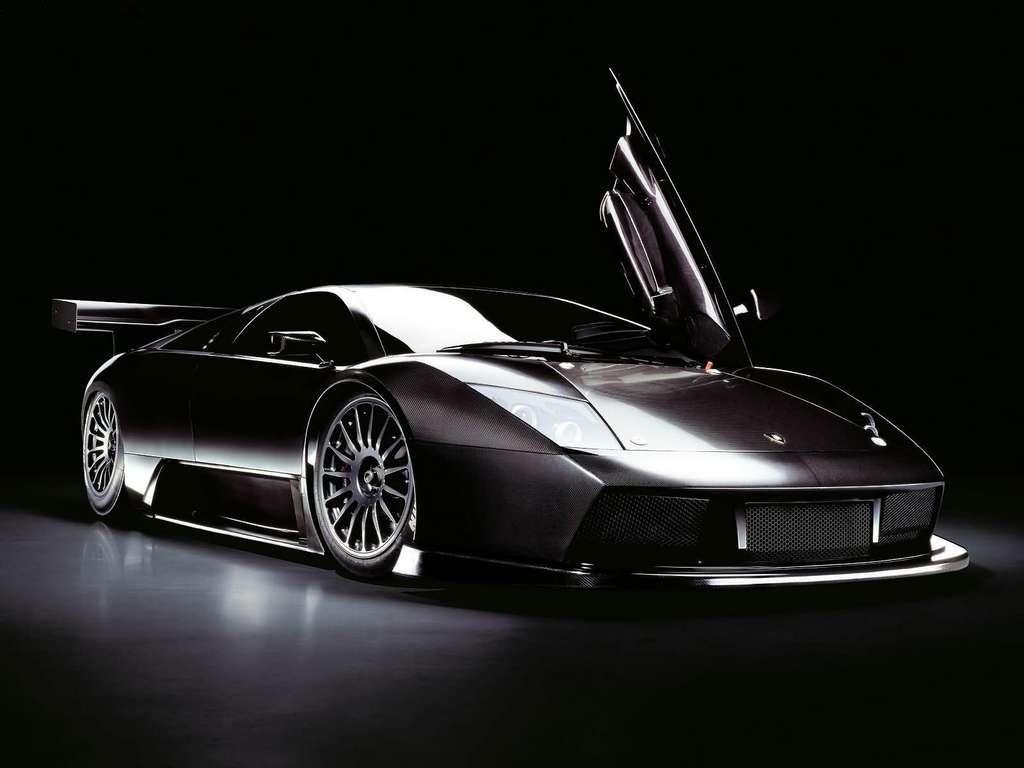 Apparently, the term “Barnyard” is an understatement as the iconic 1938 Bugatti Type 57C Atlante Coupe was stored along with several other important cars in Mr. John W. Straus private garage, protected from the elements of nature. Nevertheless, keeping a dream car like this, out of sight and out of reach, stuck between four walls for more than four decades, is a hefty crime in our books. Now the Bugatti Type 57C originally bodied by Gangloff of Colmar with Stelvio cabriolet coachwork is seeking a second chance in life as it’s been offered for sale on June 3rd at the Greenwich Concours D'Elegance with an estimated price of $300.000-400.000. Follow the jump for an extensive history of the car and its owners. Via: Jalopnik , Source: Christies
Apparently, the term “Barnyard” is an understatement as the iconic 1938 Bugatti Type 57C Atlante Coupe was stored along with several other important cars in Mr. John W. Straus private garage, protected from the elements of nature. Nevertheless, keeping a dream car like this, out of sight and out of reach, stuck between four walls for more than four decades, is a hefty crime in our books. Now the Bugatti Type 57C originally bodied by Gangloff of Colmar with Stelvio cabriolet coachwork is seeking a second chance in life as it’s been offered for sale on June 3rd at the Greenwich Concours D'Elegance with an estimated price of $300.000-400.000. Follow the jump for an extensive history of the car and its owners. Via: Jalopnik , Source: Christies1938 BUGATTI TYPE 57C ATALANTE COUPE
Chassis No. 57766
Engine No. C57
Coachwork by Bugatti
Two-tone black and yellow with beige lather interior
Engine: 160bhp dual overhead camshaft inline eight cylinder, 3,257cc, supercharged; Gearbox: 4-speed manual; Suspension: front, live axle with semi-elliptical leaf springs, rear, live axle with reversed quarter-elliptical leaf springs; Brakes: four wheel mechanically-operated drums. Right hand drive.
Jean Bugatti died on the evening of August 11, 1939 while testing the Bugatti Type 57C "Tank" race car on the highway between Molsheim and
At least as brilliant and gifted as his precocious and talented father, descended from a line of opinionated, creative, driven individuals, Jean Bugatti had already at the young age of thirty established himself as capable, indeed as destined, to build a new generation of Bugatti automobiles on the legacy of his father, the legendary Ettore.
Jean Bugatti grew up surrounded by the fastest and most beautiful cars of their era and counted among his acquaintances their most accomplished and fearless drivers. His family was among the most successful artists of their day. Jean Bugatti was born and nurtured within a milieu of intuitive and aesthetic excellence. He began his apprenticeship in the Bugatti works at an early age, working alongside the craftsmen, artisans, machinists, foundrymen and racing drivers to learn from the inside out every element of building an automobile.
When Jean Bugatti came of age and began to exert his own influence within the walls of Molsheim his experience encompassed every aspect of automobile design: from engines, brakes and suspension to the emerging art of aerodynamic coachwork design and aesthetics. He had worked in the shops and foundries of Molsheim and appreciated the nuances of manufacturing, machining, casting and assembly.
The legacy which Jean Bugatti left us was the Bugatti Type 57, the melding of his mechanical and aesthetic talents which hinted at what Bugatti could have achieved under his guidance. The Bugatti Type 57 marked the ascendancy of Jean Bugatti.
A dual overhead camshaft inline eight-cylinder with cylinders and head cast integrally, the Type 57 was the first Bugatti to have the transmission (a four-speed constant-mesh design) in unit with the engine and employed a single plate clutch in place of Bugatti's traditional multi-plate unit. The camshaft drive gears were at the rear of the engine, the valves were actuated through finger-type followers. There were five main bearings, plus a sixth behind the camshaft drive. A long-stroke design, the Type 57 had a bore and stroke of 72mm by 100mm for 3,257cc displacement.
In its original naturally aspirated form the Bugatti Type 57 delivered some 135 brake horsepower. Four years after the Type 57's introduction in 1934 Bugatti introduced the supercharged Type 57C. The Type 57C increased output by at least 25 brake horsepower as well as boosting power throughout the engine's usable rev range and producing the most powerful and desirable of the Type 57's several drivetrain variations. Jean Bugatti sought to move Bugatti's chassis design into the forefront of Thirties' technology when the Type 57 was in development, first conceiving a fully independent front suspension using transverse leaf springs as the upper and lower arms. Two prototypes were built before Ettore - by then working almost exclusively from quarters in
Jean tried again to achieve a modicum of independent action within Ettore's strictures by proposing a split beam axle but Le Patron quashed even that refinement and the Type 57 employed a forged tubular front axle of traditional Bugatti design throughout its life. In late 1938 Bugatti's long-favored mechanical brake actuation was finally superseded by hydraulically-actuated Lockheed brakes with twin master cylinders. Aside from the lightweight and effective but outdated live front axle, Jean Bugatti's efforts had brought the Type 57 to the forefront of performance, specifications, efficiency and technology for its time.
Jean Bugatti's genius, however, was fully and visibly apparent in the coachwork which he designed for his steadily more modern Type 57 chassis and drivetrain.
In an era when the finest chassis were still regularly clothed by independent coachbuilders, Jean Bugatti had brought the Bugatti coachworks in Molsheim and its counterpart at Gangloff in nearby
Even those famous designs were, however, ordinary compared with the exquisite proportions and intricate details of the Molsheim-built Atalante Coupes. Conceived without compromise for high speed transport of only two fortunate occupants, the Atalante's name - taken from a fleet-footed heroine of Greek mythology rather than alpine landmarks - signified how different it was from the others in Bugatti's coachwork catalog. Its graceful proportions, steeply raked windshield, extended teardrop front fenders, intimate two-place cockpit, absence of running boards and new elliptical side panel delineation sweeping gracefully from the intersection of the hood's side hinge with the radiator shell back across the door to end at the bottom of the rear wheel arch projected a light, free, intimate feeling.
Atalante offered little in the way of concessions to practicality. It was the epitome of a Grand Routier, designed for a gentleman and his lady to take advantage of a brief opportunity to get away from everyday life for a respite on the coast, at the casino or in the mountains.
Owners
The 1938 Bugatti Type 57C offered here was originally bodied by Gangloff of Colmar with Stelvio cabriolet coachwork for Nicholas Embiricos. Following the war it came into the hands of Ray Murray in the
The Atalante Coupe's original chassis, fitted with the Type 57C's Stelvio coachwork ended up with Dr. Richard Riddell. After a wreck in 1969 the chassis was parted out by "Bunny" Phillips; the Stelvio coachwork is now on chassis 57600.
One of several important cars in the Straus Collection, he drove it until about 1962 when it was parked in his garage alongside several other cars. It has remained there, dry, protected from the elements and out of sight, ever since. Its whereabouts were noted in the 1991 revision to the American Bugatti Club Register, although it erroneously noted its engine number as C70 which was actually the engine in the confusingly similarly numbered 57786.
A second series Type 57, Atalante Coupe 57766 has several improvements in addition to the supercharged engine including rubber engine mounts for quieter operation. It is complete and remarkably well preserved, making it the ideal basis for a quality restoration that will return it to the appearance, condition and performance which led Ray Murray to combine its supercharged Type 57C chassis with the beautiful and rare Atalante coachwork and induced the current owner to keep it for more than half a century. It was less than thirty years old when it was laid up and had been owned by a succession of thoughtful collectors who treated it with the respect and admiration which its style and performance deserved. Even at the beginning of the last century's second half they recognized and appreciated the wonderful combination of the supercharged Type 57C's performance and Jean Bugatti's stunning Atalante coachwork.
A new owner now has the opportunity to assume the mantle of these legendary collectors and to give the crowning achievement of Jean Bugatti's brief but illustrious career the preservation and restoration it so amply deserves.
Technorati: Bugatti+Type+57C+Atlante+Coupe, ebay, Christies, auto+news, car+news, automobile, cars, automotive, vehicles, Carscoop, blogs, 2007









